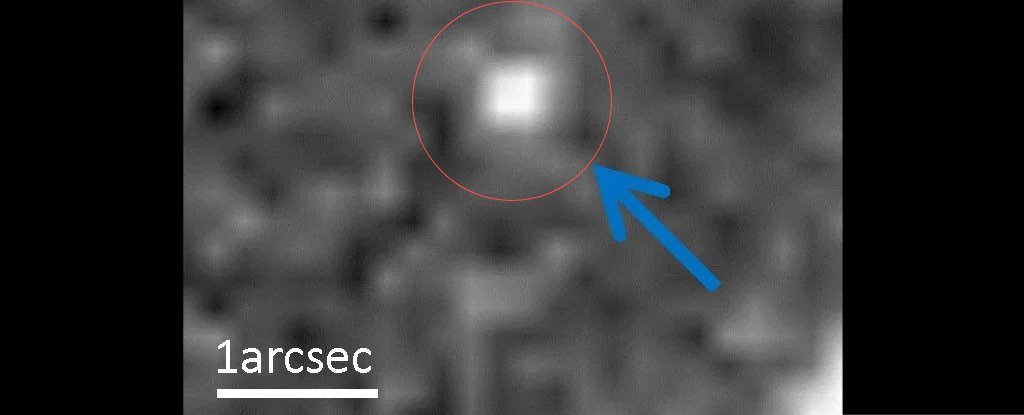
From time immemorial, philosophers and scholars have considered the beginning of time and even tried to determine when it all began. It is not until the age of modern astronomy that we have answered that question with a reasonable degree of certainty.
According to the most widely accepted cosmological models, the Universe began the Bang Bang about 13.8 billion years ago.
Yet astronomers are still unsure of what the early Universe looked like, as this period coincided with the cosmic “dark ages”. That’s why astronomers keep pushing the boundaries of their instruments to see when the earliest galaxies formed.
New research by an international team of astronomers has identified the oldest and most distant galaxy observed in our Universe to date (GN-z11).
The team, whose research was recently published in the journal Nature Astronomy, was led by Linhua Jiang from the Kavli Institute of Astronomy and Astrophysics and Prof. Nobunari Kashikawa from the University of Tokyo.
They were joined by researchers from the Observatories of the Carnegie Institution for Science, the Steward Observatory, the Geneva Observatory, Peking University and Tokyo University.
Simply put, the Cosmic Dark Ages started about 370 thousand years after the Big Bang and lasted another 1 billion years.
At this point, the only light sources were either the photons released earlier – which are still detectable today as the Cosmic Microwave Background (CMB) – and which are released by neutral hydrogen atoms. The light from these photons has shifted so much as a result of the expansion of the universe that they are invisible to us today.
This effect is known as “redshift”, in which the wavelength of light is extended (or “shifted” to the red end of the spectrum) as it travels through the expanding cosmos on its way to reach us.
For objects closer to our galaxy, the effect is reversed, with the wavelength getting shorter and shifting towards the blue end of the spectrum (also called “blueshift”).
Astronomers have been using these effects for nearly a century to determine the distance of galaxies and the speed at which the Universe is expanding. In this case, the research team used the Keck I telescope in Maunakea, Hawaii, to measure the redshift of GN-z11 to determine its distance.
The results they obtained indicated that it is the most distant (and oldest) galaxy ever observed. As Kashikawa explained in a press release from the University of Tokyo:
“Previous studies show that the galaxy GN-z11 is the furthest detectable galaxy from us, at 13.4 billion light years or 134 million kilometers (that’s 134 followed by 30 zeros). But measuring and verifying such a distance is not simple. task. “
Specifically, the team examined the carbon emission lines from GN-z11, which were in the ultraviolet range when they left the galaxy and shifted by a factor of 10 – to the infrared (0.2 micrometers) – by the time they reached Earth .
This level of redshift indicates that this galaxy existed as observed about 13.4 billion years ago – or just 400 million years after the Big Bang.
At this distance, GN-z11 is so far that it determines the boundary of the observable universe itself! Although this galaxy had been observed in the past (by Hubble), it needed the resolving power and spectroscopic capabilities of the Keck Observatory to make accurate measurements.
This was performed as part of the Multi-Object Spectrograph for Infrared Exploration (MOSFIRE) survey, which detailed GN-z11 emission lines.
This allowed the team to make distance estimates for this galaxy that had improved by a factor of 100 from previous measurements. Kashikawa said:
The Hubble Space Telescope has detected the signature several times in the spectrum of GN-z11. But even Hubble cannot detect the ultraviolet emission lines to the extent we need. on the Keck I telescope in Hawaii. “
If later observations can confirm the results of this latest study, the astronomers can say with certainty that GN-z11 is the most distant galaxy ever observed. By studying objects like these, astronomers hope to shed light on a period in cosmic history when the universe was only a few hundred million years old.
This period coincides with the fact that the Universe began to emerge from the “Dark Ages”, when the first stars and galaxies formed and filled the early Universe with visible light.
By studying these, astronomers hope to learn more about how the large-scale structures of the Universe subsequently evolved. This will be assisted by next-generation telescopes such as the James Webb Space Telescope (JWST), which will launch October 31, 2021.
With these instruments, astronomers can even study the “dark ages” themselves, a time when the only non-CMB light was the spinline of neutral hydrogen – in the far microwave wavelength (21 cm).
To be able to investigate the very beginning of the universe itself and to see how the first stars and galaxies form. What an exciting time that will be!
The observations that made this research possible were carried out as part of the time-exchange program between the Keck Observatory and the Subaru telescope in Maunakea, Hawaii.
This article was originally published by Universe Today. Read the original article.